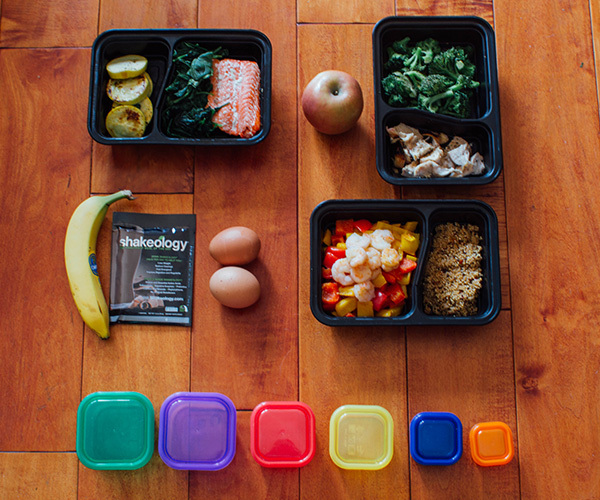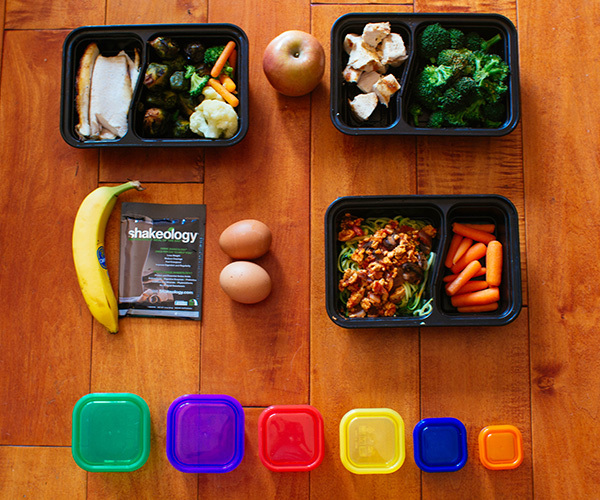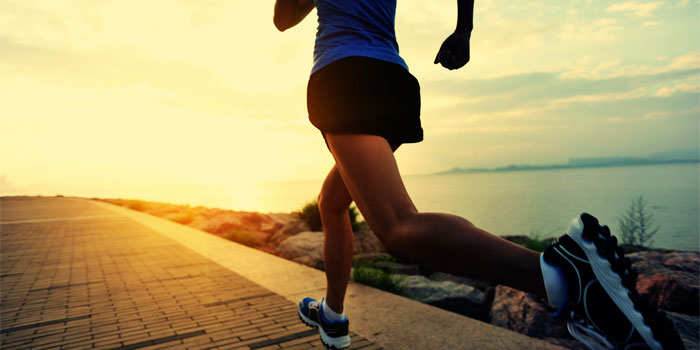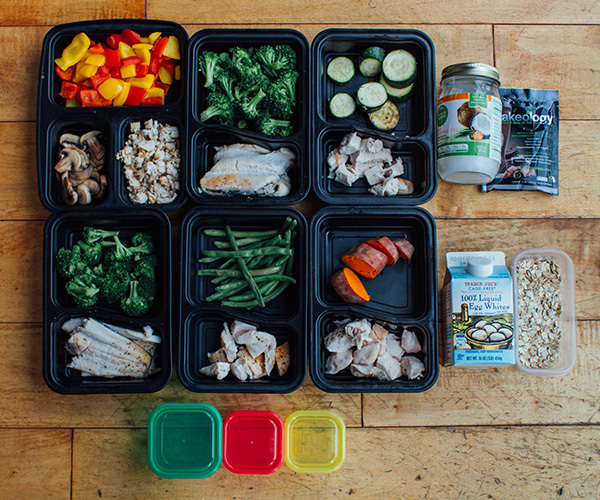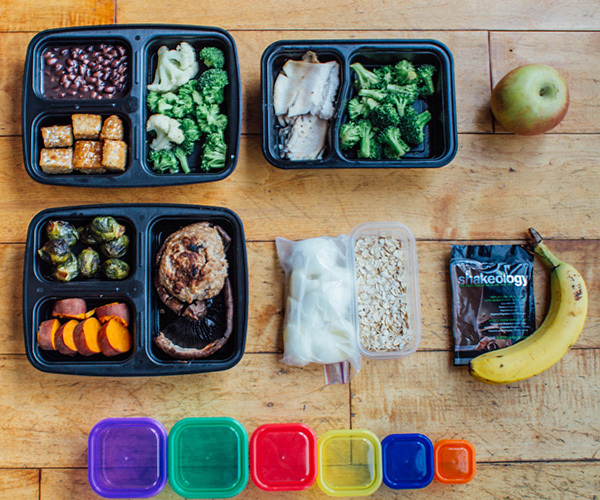A perennial favorite of bro-science fitness enthusiasts, working out in a fasted state simply means exercising after having not eaten for several hours, typically early in the morning when your last meal was dinner. In this situation, your blood sugar and liver glycogen levels are compromised, so you’re more inclined to burn body fat as fuel.
I know, right? Sounds like the most awesome thing ever! Don’t get too excited, though. It’s potentially a great tool for endurance athletes—especially those wanting to train their bodies to regulate fuel stores more efficiently. But its benefits for everyone else, including people simply looking to shed a few pounds, are less clear.
Keep in mind that I’m not talking about merely working up a sweat on an empty stomach. I’m talking about going without food for a substantial amount of time—at least 12 hours—so that you force your body to shift the way it produces energy. If you’re more interested in the pros and cons of working out after not eating for 3 to 4 hours (i.e., on an empty stomach when you probably still have plenty of blood sugar and glycogen),
click here
But I digress. Should you work out in a fasted state? The full answer depends on your goals—and it helps to understand how your body fuels itself.
Food is Power
Obviously, food equals fuel, but your body is pretty clever about how it makes the most of your meals. All food is basically made up of three macronutrients: Carbohydrates, fat, and protein. When you eat them, the first thing they do is satisfy their primary objectives. For protein—which you’ll find in animal products, legumes, seeds, nuts, and many veggies—that means supporting your body’s infrastructure in countless ways, including as “building blocks” for muscles, bones, and organs. Fat—which includes oils, seeds, nuts, cheese, butter, olives, and avocados—serves many functions, including giving structure to cells, but it’s mainly used as fuel. The fat you use as fuel floats around in your blood. Your muscles also store a small amount of fat for fuel in the form of intramuscular triacylglycerol.
Carbs mostly just act as fuel. You’ll find them in veggies, fruits, grains, and almost every junk food in existence. A small amount of excess carbs is stored in your liver and muscles as glycogen. Liver glycogen works as back-up fuel for every organ and tissue in your body. Muscle glycogen just gives muscles energy.
Generally speaking, once your food intake exceeds your current needs, it’s stored as adipose tissue (AKA body fat). That goes for all three of the macronutrients (carbs, fat, and protein); eat too much of them, and they’ll literally weigh you down.
Like muscle growth, the accumulation of adipose tissue is an anabolic process, meaning that your body actively builds it up. When you’re not consuming enough food to keep up with your energy needs, your body’s catabolic processes, which break down things like adipose tissue and muscle for use as fuel, kick in.
When you exercise, you use both fat and carbs as fuel. Your body tends to prefer fat for low- to mid-level exertion, and carbs for high-level exertion, but this doesn’t work like a light switch. There’s a ton of overlap when it comes to what’s burned under what circumstances. However, even athletes with little adipose tissue have access to a relatively large reserve of fat calories (about 50,000 on average). Liver and muscle glycogen, however, are a limited commodity, only supplying somewhere between 1,400 and 1,800 calories when fully stocked. So when your body senses it has less of them—like when you’re in a fasted state—it’s prone to conserve what it has and focus on burning fat instead. Unfortunately, that doesn’t always lead to a smaller waist size.
The Fast Way to Less Fat (Sort of)
Although we can no longer claim that weight loss is as simple as calories in versus calories out, that’s still a good guideline. If you consistently eat 1,800 calories a day, but your body burns 2,400 calories a day, you should lose weight. If you exercise, you’ll burn even more calories, regardless of when you do it. There are a few ways to optimize your workout to mobilize fat stores, but that doesn’t mean they’ll stay mobilized. The fat will come back or stay away based on your totally daily caloric intake.
There was a well-publicized (and oft-cited)
study by Belgium researchers in 2010 that tried to disprove this, but it’s deeply flawed. In the study, all subjects were fed a hyper-caloric, high-fat diet, but they were split into three groups. The first group didn’t work out. The second group worked out every day in a fasted state. The third group worked out every day following a high-carb meal. By the end of the study, the fasted-state exercisers were better able to maintain their weight and experienced better glucose tolerance and insulin sensitivity than the other two groups. In other words, according to this study, fasted state training appears to out-perform non-fasted state training when it comes to warding off both weight gain and pre-diabetes symptoms common with high-caloric diets. But here’s the problem: The carbed-up exercisers were fed a 675 calorie meal 90 minutes before working out, and then given a hypertonic (i.e., high-sugar) sports drink to sip as they exercised. That’s a lot of food sloshing around in someone’s gut—especially if he or she is already overfed! In all likelihood, not only did the meal inhibit the subjects’ workouts, but
the overly-carby sports drink didn’t do them any favors either.
In 2014, a far more applicable (albeit less publicized)
study had very different results. Women were split into two groups. They all ate a similar diet (right around 1,300 calories), but half of them did a cardio workout in a fasted state while the other half drank a 250-calorie shake prior to exercise. Everyone had similar results with regards to weight loss. Admittedly, the study was only four weeks, but in some contexts (e.g., “OMG, Becky’s wedding is only a month away and I need to squeeze into this dress!”), that’s a duration worth considering.
So fasted state training for fat loss is a probably no-go. But what about its other purported perks—namely, that it can help you build more muscle and optimize your energy systems? This is where the fasted state debate becomes even more interesting.
The Muscle-Building Connection
Despite what some experts claim, there’s not much research regarding the possible bodybuilding benefits of fasted-state training—and what there is has been manipulated by bloggers eager to offer unique, magical ways to help you achieve your goals. With this in mind, common sense should play a large role in the choices you make.
For example, some experts claim that fasted-state training promotes the release of growth hormone (GH). Growth hormone’s name is somewhat self-explanatory, but for the record, it’s a hormone that promotes growth, especially in bone, collagen, and muscle. Activities that promote GH’s release include sleep,
exercise, and
fasting—so it’s only natural that people try to focus on all three for a bonus effect. Unfortunately, while the release of GH during a fast has been shown to have an anabolic effect, that’s likely a result of the body trying to mitigate the catabolic impact of not eating, according to a
study at the University of Virginia. And exercising while fasting is even more catabolic, so this combo isn’t necessary a homerun.
Many bloggers claim that consuming branch chain amino acids before a workout, or a carb-protein drink post-workout, will solve the catabolism issue while still giving you the GH benefits. But then you’re not really fasting, are you? In other words, the fasted-state training/GH connection might be possible, but it’s tenuous and the science isn’t convincing.
Building a Better Athlete
Fasted state training is a time-honored tactic for increasing oxidative capacity (i.e., your muscles’ ability to produce energy) in the endurance sport world. But while there are a number of studies confirming that fasting in general increases fat oxidation (burning) and decreases glycogen turnover both in rats and in humans, hard scientific evidence supporting its benefits for training is somewhat sparse.
One 2008
study on humans showed decreased glycogen use specifically during fasted-state training, but fat oxidation (i.e., the conversion of fat into energy) didn’t change. It’s worth noting, however, that all of the participants were fed a high-carb diet the rest of the time, so the lack of increased fat oxidation could simply be a consequence of the overnight fast not being long enough to burn through all of the carbs.
Another six-week
study from 2011 showed that fasted state training increased muscle oxidative capacity better than fed training, but performance gains were similar in both groups. That might cause some people to write off the results, but keep a couple of things in mind: First, six weeks isn’t very long in the training life of a serious endurance athlete (unlike the dress-fitting window for Becky’s bridesmaids). Second, cycling performance was tested using a 60-minute time trial. Competitive endurance events often go on for hours, so the trial might simply have not allowed enough time for the performance benefits to kick in. (Indeed, it would have been interesting to see what happened with the cyclists after four or five hours on the road.) Bottom line: When it comes to the benefits of fasted state training for endurance athletes, the science is promising, but the jury is still out.
For everyone else, the jury is in: It doesn’t seem to help. To be clear, it won’t hurt performance during low intensity activities (i.e., those with an exertion level below 50 percent of VO2max). You might even notice a small boost as your body conserves glycogen by burning fat. But the point of working out is to push yourself, and that’s where fasting can backfire. Studies show that cranking your workout intensity up to high in a fasted state can
decrease performance—even when carbs are consumed while exercising.
To sum up, if you’re an endurance athlete, you might want to consider including both fasted state and fed training in your regimen. One thing though: Don’t do recovery workouts in a fasted state! Those are all about giving your body, including your metabolism, a break. But if you’re not an endurance athlete and the idea of exercising intensely for longer than 90 minutes strikes you as mindless torture, fasted state training probably isn’t something you need. You’re better off fueling up so your muscles can get the most possible benefit from your efforts.




